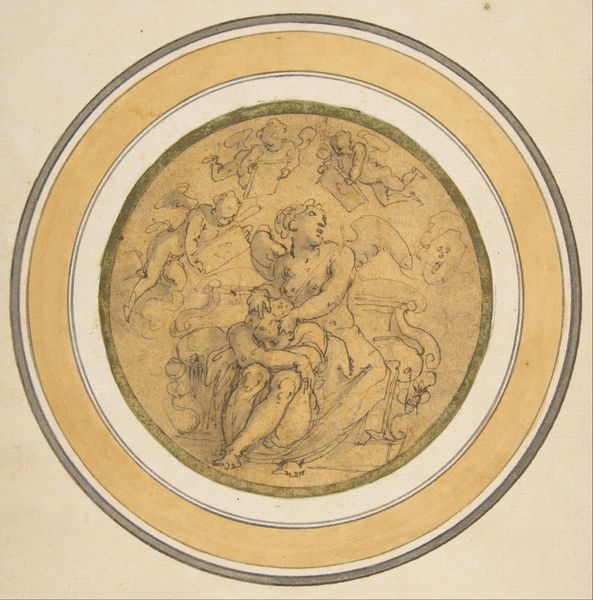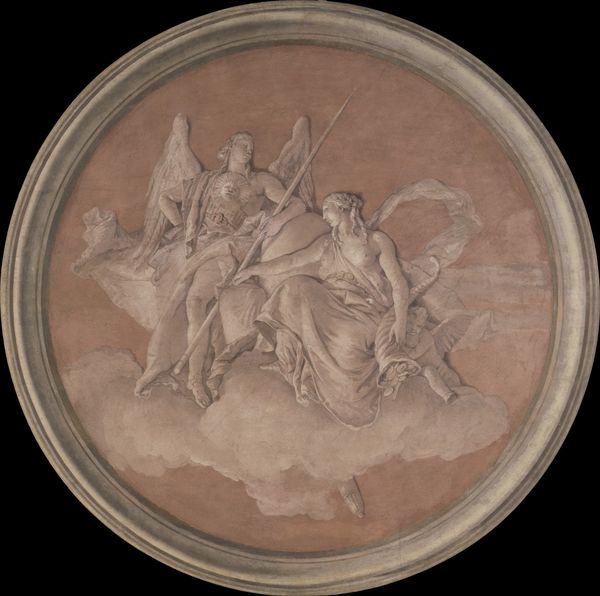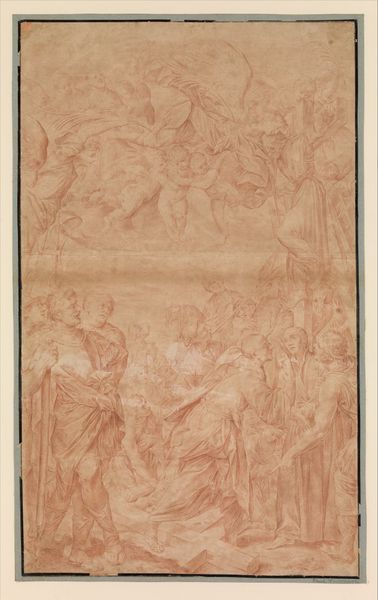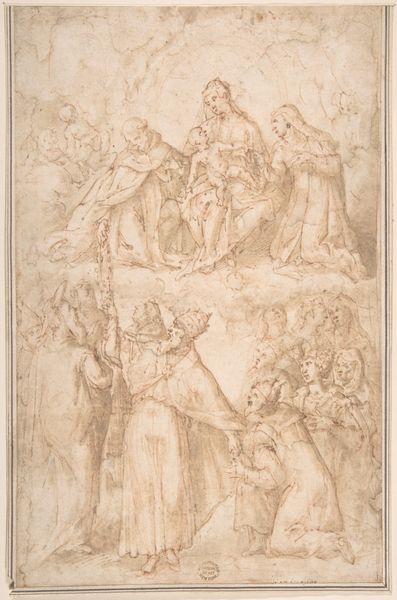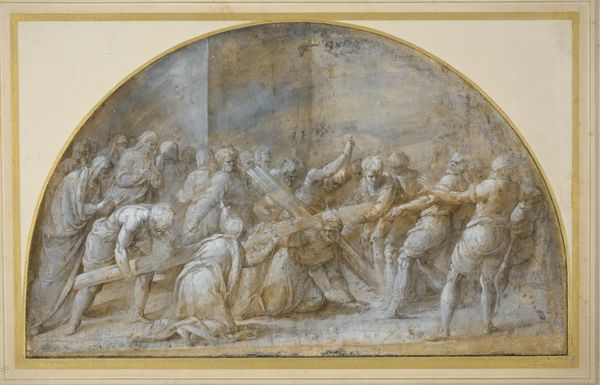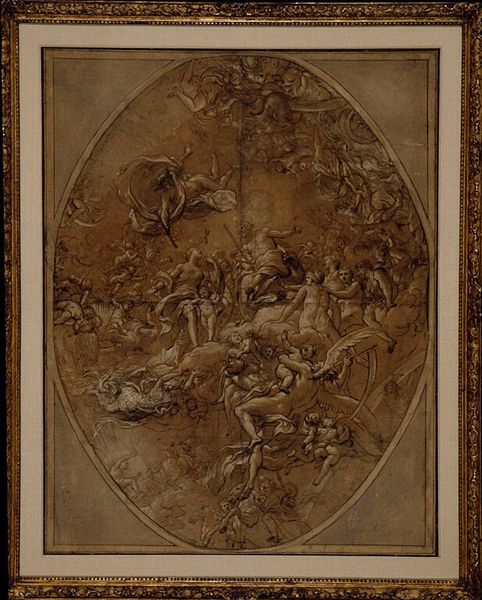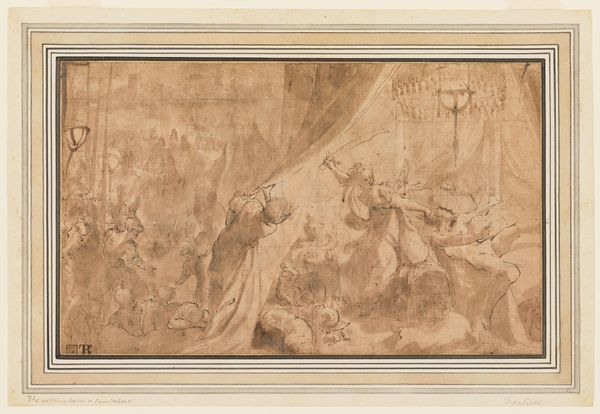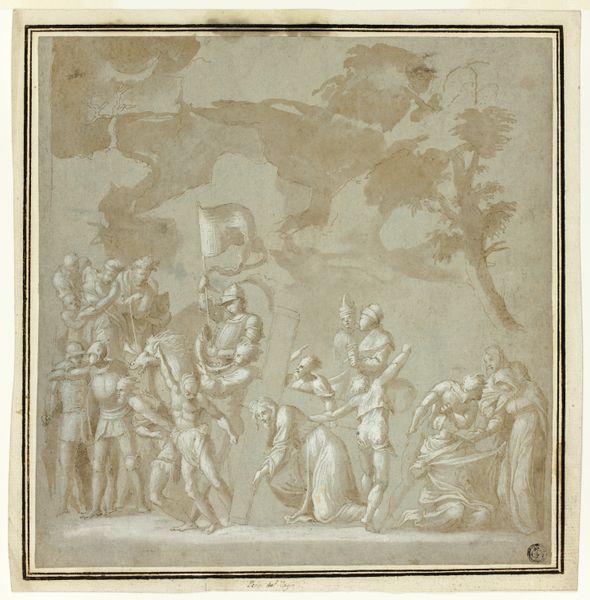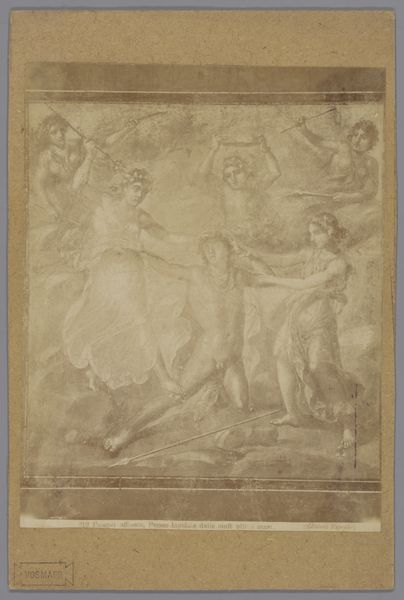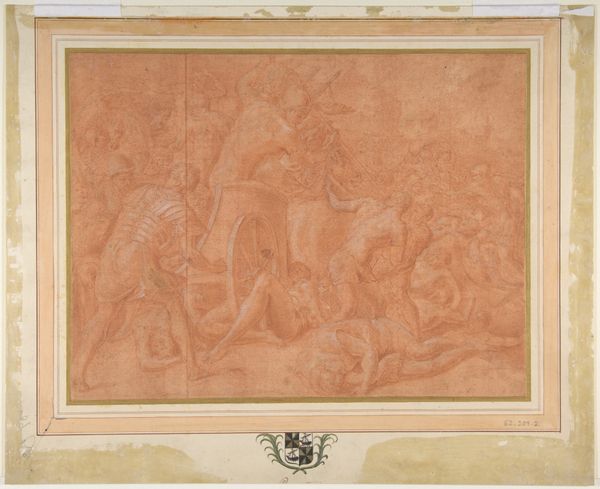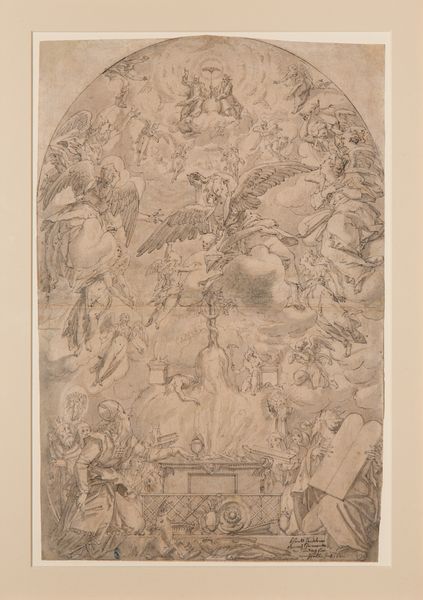
drawing, print, gouache, paper, ink, pencil, chalk, black-chalk
#
drawing
#
toned paper
#
narrative-art
# print
#
gouache
#
sculpture
#
figuration
#
paper
#
11_renaissance
#
ink
#
pencil
#
chalk
#
history-painting
#
black-chalk
#
watercolor
Dimensions: 270 × 296 mm
Copyright: Public Domain
Curator: What strikes me first about Camillo Boccaccino's "Judgment of Solomon," made with pencil, black chalk, pen and brown ink, heightened with white gouache, on toned paper, is the potent narrative rendered with such restrained lines. Editor: Indeed. There’s a stark emotional weight to this composition. The unfinished nature, the visible strokes, and the muted palette combine to amplify the drama and ambiguity inherent in the scene. It feels incredibly immediate. Curator: The choice to depict this specific moment from the Old Testament—Solomon’s clever ruse to identify the true mother—is telling. It speaks to Renaissance concerns about justice, truth, and the complexities of maternal identity. Editor: Absolutely. Visually, the sword is the most powerful element—an enduring symbol of power and potential violence, dividing not just the child but also highlighting the stark contrast between the two women's gestures and their connection with their motherhood and female status. Curator: The visual language also reflects societal anxieties present even now. One must recognize the patriarchal assumptions embedded in the narrative itself—the idea that "true" motherhood reveals itself through sacrifice, thus silencing any woman unwilling to conform to this model. How do you read the other figures that seem on looking? Editor: Looking at the overall effect of the scene, the additional figures contribute to the drama. We find the subjects witnessing a story and Solomon himself presiding over the scene like a stoic god or a modern magistrate who sees and delivers an unimpeachable judgment. Curator: The raw emotionality, and skillful use of line to convey such a complex interplay of power, gender, and ethics make "Judgment of Solomon" more than just an illustration. Editor: I find the art quite powerful to trigger our thoughts and to explore cultural memory of enduring legal images in today's world. Curator: Yes, a reminder that art, even when depicting historical or biblical narratives, remains deeply intertwined with the socio-political realities in which it was created and consumed. Editor: Precisely. Symbols tell tales that last.
Comments
No comments
Be the first to comment and join the conversation on the ultimate creative platform.
